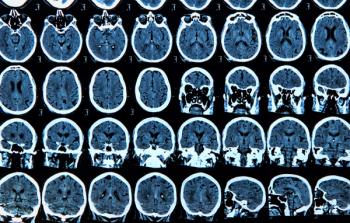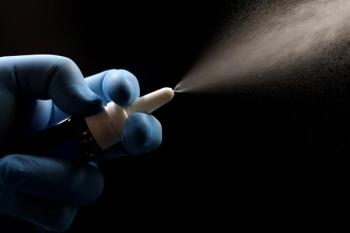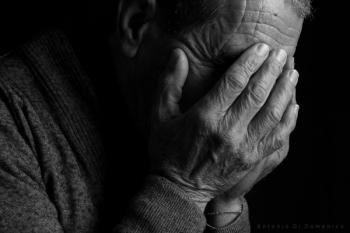
- Vol 32 No 3
- Volume 32
- Issue 3
Moving Beyond “Hand Waving”: Why Do People Sleep a Lot After a Traumatic Brain Injury?
Your patient is recovering from a traumatic brain injury. He asks you, “Doc, why do I need so much extra sleep?”
[[{"type":"media","view_mode":"media_crop","fid":"33247","attributes":{"alt":"People sleep a lot after a traumatic brain injury","class":"media-image media-image-right","id":"media_crop_5818841105079","media_crop_h":"0","media_crop_image_style":"-1","media_crop_instance":"3502","media_crop_rotate":"0","media_crop_scale_h":"135","media_crop_scale_w":"150","media_crop_w":"0","media_crop_x":"0","media_crop_y":"0","style":"float: right;","title":" ","typeof":"foaf:Image"}}]]Your patient is recovering from a traumatic brain injury (TBI). He asks you, “Doc, why do I need so much extra sleep? And, what makes me so sleepy during the day?”
If you’re like me, you’ve told patients like this individual that it takes time for the brain to heal. You’ve explained that even a mild concussion can disrupt neural fibers and that mental activity may be more effortful following such an injury.
Perhaps there is some truth to all of that. But probably it is mostly “hand waving.”
I just read about what is more likely to be the actual explanation for those post-TBI symptoms. The Annals of Neurology1 published research showing that in severe TBI, there is substantial loss to specific types of neurons in the hypothalamus-namely neurons that are part of networks involved in promoting wakefulness or in regulating sleep.
The potential explanatory power of these findings is impressive. Although this research was conducted in cases of fatal brain trauma, nonetheless it provides insights that will help scientific investigators and clinicians think more specifically about disruptions in sleep and wakefulness following any traumatic brain injury.
TBI and sleepiness
TBIs are a major public health concern, affecting close to 2.5 million individuals each year in the US, according to the CDC statistics for 2010.2 Whether the TBI is mild or severe, at least 25% of patients experience some disturbance in sleep and/or level of daytime arousal following the injury. Symptoms in this arena may substantially affect recovery and contribute to disability.
Every psychiatrist has encountered patients who have had TBIs-from mild concussions as a consequence of collisions on the soccer field or falls on icy steps to devastating brain injuries after motor vehicle accidents or barroom fights. These post-TBI patients frequently experience excessive daytime sleepiness in the face of what used to be sufficient sleep time. They also commonly exhibit pleiosomnia-the need for more than the usual amount of sleep in a 24-hour period. Less frequently, patients have disturbed nighttime sleep-insomnia.
Effective approaches are needed to help patients with these post-TBI difficulties. The design of new treatment strategies depends on developing a better understanding of the mechanisms that underlie these post-TBI problems with arousal and sleep.
New research
In the January 2015 issue of Annals of Neurology, Valko and colleagues1 report on recent studies that followed up on research they published in 2009.3 Together, the two articles make several important points.
They draw attention to the fact that hypothalamic injury is common in TBI. The authors point out that the posterior nucleus (containing histaminergic neurons) of the hypothalamus is most affected. They hypothesize that this is a consequence of shearing forces at the junction of the hypothalamus and the midbrain during head trauma. The authors identify a substantial loss of histaminergic neurons in the tuberomammillary nucleus of the posterior hypothalamus; these neurons are part of a major arousal-promoting system.
They also identify a less substantial but still significant loss of hypocretin/orexin neurons and melanin-concentrating hormone (MCH) cells in the hypothalamus. We know that these types of neurons are involved in regulating arousal and sleep. Hypocretin/orexin neurons are deficient or absent in narcolepsy; MCH neurons are involved in both REM and non-REM sleep and are hypothesized to promote sleep consolidation.
The authors suggest that their findings point to a new approach for treating post-TBI patients who experience the need for extra sleep. “. . . increased sleep need may respond well to medications that enhance histamine signaling.” The article refers to pitolisant, a drug that increases histamine signaling and that is being tried with some success in patients with narcolepsy.
Hand waving
As physicians, we often engage in hand waving. The on-line Urban Dictionary defines this term as “attempting to get past a moment when a difficult explanation is required.”4 Sometimes, we hand wave because a concept is very complex and a patient may not have the educational background required to understand the full explanation. On other occasions, we decide that a full explication of the concept would be a diversion from what is truly important to the patient and that time is of the essence.
And then there are times when we hand wave because we do not fully understand what we are trying to explain to the patient. Often in these situations, we believe that we simply don’t know the details but that we do have a grasp of the general concepts that are involved. We don’t always realize that we are glossing over certain steps in our reasoning.
This is reminiscent of a cartoon by Sidney Harris. Two scientists stand in front of a blackboard on which the equations of a mathematical proof are scrawled. In the midst of this string of equations are written these words: “Then a miracle occurs . . .”5 The good news is that when it comes to explaining to patients who have had TBIs why they are so tired or why they sleep so much, my hand waving days are over. Now I can tell patients that there was a recent study that goes a long way toward explaining this phenomenon.
Next time I will tell my patient that there are specific systems in the brain that promote wakefulness and regulate sleep. Many of the key cellular components in these systems are found in the hypothalamus, and they may be injured with head trauma. It’s complex, but we are beginning to understand.
Acknowledgment-I am grateful to Dr Alvaro Pascual-Leone for calling my attention to this article in Annals of Neurology and also for his thoughts on “hand waving.”
References:
1. Valko PO, Gavrilov YV, Yamamoto M, et al. Damage to histaminergic tuberomammillary neurons and other hypothalamic neurons with traumatic brain injury. Ann Neurol. 2015;77:177-182.
2. Centers for Disease Control and Prevention. Injury Prevention & Control: Traumatic Brain Injury. http://www.cdc.gov/traumaticbraininjury. Accessed February 20, 2015.
3. Baumann CR, Bassetti CL, Valko PO, et al. Loss of hypocretin (orexin) neurons with traumatic brain injury. Ann Neurol. 2009;66:555-559.
4.Urban Dictionary. Hand waving. http://www. urbandictionary.com/define.php?term=hand+ waving. Accessed February 20, 2015.
5. Harris S. Science Cartoons Plus. http://www. sciencecartoonsplus.com/pages/gallery.php. Accessed February 20, 2015.
Articles in this issue
over 10 years ago
Harnessing Social Media and Mobile Apps for Mental Healthover 10 years ago
Predicting, Assessing, and Treating Self-Harm in Adolescentsover 10 years ago
A Call to Arms to Understand and Treat Aggressive Behaviorover 10 years ago
Gun Violence, Stigma, and Mental Illness: Clinical Implicationsover 10 years ago
Intermittent Explosive DisorderNewsletter
Receive trusted psychiatric news, expert analysis, and clinical insights — subscribe today to support your practice and your patients.















